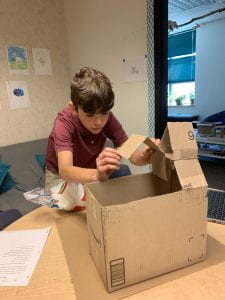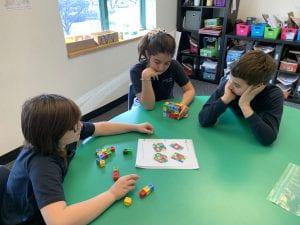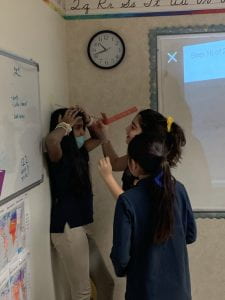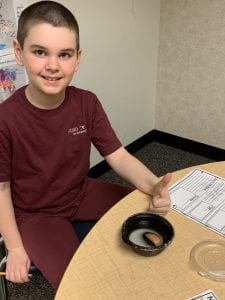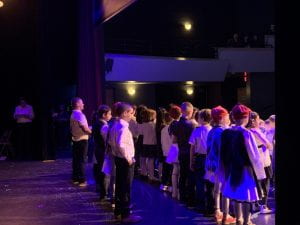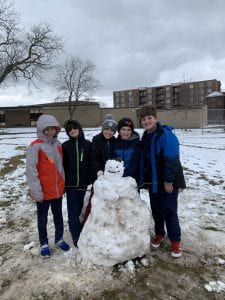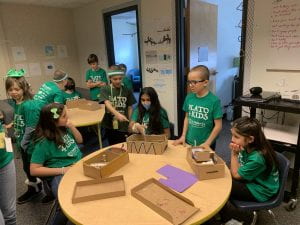Hello everyone,
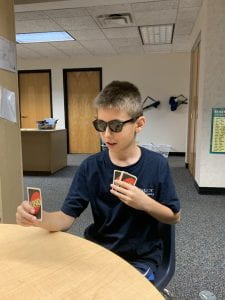
This week involved the finishing of many projects.
To start, we finished our current class novel, Timmy Failure: Mistakes were Made. The students loved laughing along with this book and we can’t wait to watch the new movie adaptation of this book on Disney+ next week!
We also finished our Lost Cities projects and presented them to the class. The students took turns coming up to the front of the room to show off their models, their Google Slides presentations, their essays, and their posters. Each student became an expert on their city and shared fascinating information with us. The class loved learning about all of these lost cities from around the world.



For math, we finished up our geometry unit. We started the week by focusing on quadrilaterals. The students were given a set of quadrilaterals and were asked to sort them based on features they had in common. Many of the students chose to sort the shapes into categories based on whether or not they had parallel sides, right angles, and how long their sides were. Most of the shapes ended up being sorted into the categories of trapezoids, parallelograms, rhombuses, rectangles, and squares, even if we didn’t know all of those names yet. We talked about what all these different types of shapes were and how they share attributes with each other. We used this information to create a venn diagram showing how these shapes are related to each other.

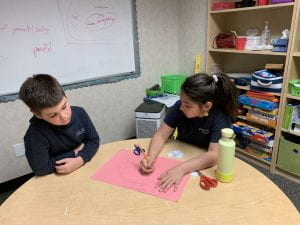

We also spent some time talking about symmetry. We discussed what it means for a shape to be symmetrical and how to identify a line of symmetry. To practice, the students were given paper shapes and were asked to find all of the lines of symmetry they had. The students were able to rotate and fold the shapes to see if the sides lined up. We were amazed at how many lines of symmetry some shapes actually have! We also learned about other types of symmetry, such as rotational symmetry and radial symmetry. Students noticed that sometimes an image has multiple types of symmetry and other times it only has one.



We ended our discussions on symmetry by learning about mandalas. Mandalas are beautiful circular designs that have radial symmetry and often also have linear and rotational symmetry. The students then had time to create their own mandalas. We saw so many creative designs. They turned out beautifully!


We also had time for another fun art project. We talked about the artist that inspired the sculpture Plato painted for Greektown: Yassonas Megoulas. We looked at some examples of his artwork. The students noticed the repeated use of black, white, blue, and gold. They also noticed lots of geometric shapes that created intricate designs. We then created our own artwork inspired by Megoulas’s style. We used black, white, blue, and yellow construction paper to cut out our geometric shapes. Some were shapes that we had learned about during math and others were irregular shapes. The students glued them all together to make beautiful artwork that looks like Megoulas himself designed it!



We also took some time to rehearse for the end of the year show. The students are becoming more confident with their lines and we’re excited to perform next week!
Finally, we had a fun event on Thursday for National Paper Airplane Day. Every student in the school created paper airplanes and each class had a competition to see which one could fly the farthest. Our class went outside to test ours and Nathan was our winner! At the end of the day, the winners from each class went into the gym to compete against each other. While Nathan didn’t win against the other classes, we all had a blast cheering him on!
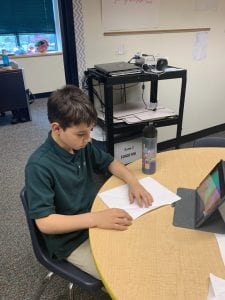




Have a great weekend!










